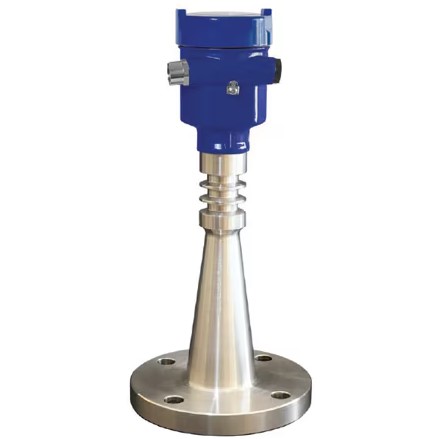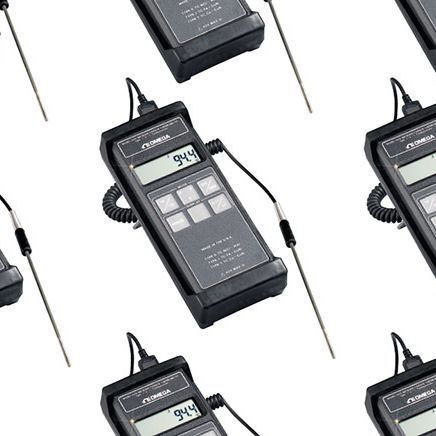Wastewater lift stations are essential for moving sewage from lower elevations to higher ground, helping to ensure a continuous and efficient flow toward treatment facilities. In residential areas, they’re strategically placed to serve entire neighborhoods.

Lift stations include a wet well, where wastewater collects, and submersible pumps that push the sewage uphill to a point where gravity can take over again. This approach reduces the need for deep trenching and extensive piping, offering a more cost-effective and practical solution for wastewater transport.
To keep lift stations running efficiently, level sensing devices are essential. They monitor the wastewater level in the wet well and trigger the pumps to activate or shut off at the appropriate times. Accurate level measurement helps prevent pump damage, overflow events, and system downtime, making reliable sensors a key part of lift station automation and control.
How Do Lift Stations Work?
At its core, a lift station collects wastewater or stormwater in a basin called a wet well. Once the liquid in the wet well rises to a predetermined level, pumps are activated to lift the fluid to a higher elevation.
Most modern lift stations use submersible pumps, which are installed directly inside the wet well. These pumps are typically controlled by float switches or more advanced level sensors, such as ultrasonic or pressure-based devices, which continuously monitor the height of the liquid. When the level reaches a set threshold, the sensors signal the control panel to turn on the pumps.
Pump controllers, like the Series MPC Flexible Pump Controller or the Series MPCJR Mercoid Pump Controller, are essentially the brain of the lift station. They govern the operation of the pumps, receive signals from the level sensors, manage alarms, and can provide operators with real-time status updates and performance data.
Once activated, the pumps push the wastewater into a pressurized discharge pipe known as a force main. Check valves in the line prevent the water from flowing backward when the pumps shut off. From there, the water continues its journey — typically to a treatment facility or another part of the sewer system that relies on gravity.
Lift stations are typically constructed of concrete or fiberglass and include ventilation systems to release built-up gases and may feature odor control components to minimize the release of unpleasant or hazardous smells, such as hydrogen sulfide or methane.
Ultimately, regardless of the construction method that is selected, level sensors are an extremely critical component of a lift station, providing the feedback needed to determine when the pump turns on and off.
Continuous Monitoring
The municipal market has been trending towards more sophisticated control systems that can provide real-time information. With tightening environmental regulations, this allows treatment to be more accurate and efficient as well as making system reporting and troubleshooting less time consuming. Continuous monitoring of the lift station level, particularly in larger, more critical stations, is becoming much more common for these reasons.
These systems will typically consist of an analog sensor in the well that signals a stand-alone control or PLC style controller to initiate the pump starts and stops. This information can then be fed into a network or RTU that would report back to a central plant or SCADA system.
The following technologies — ultrasonic transmitters, submersible level transmitters, and radar level transmitters — are common methods employed to achieve continuous monitoring in lift stations.
Ultrasonic Transmitters
Ultrasonic level sensors offer accurate, non-contact measurement by bouncing sound waves off the liquid surface. They're mounted at the top of the wet well — away from corrosive or fouling materials — and typically send a 4–20 mA signal to a controller or PLC in the panel. Many models also support Modbus, HART, or Bluetooth® for configuration and diagnostics.
Advantages: Ultrasonic level sensors provide highly accurate, non-contact measurement. Because they use sound waves rather than physical probes, they are less prone to fouling and wear, resulting in lower maintenance over time. Their installation at the top of the wet well keeps them out of harsh media and minimizes exposure to corrosive substances. The standard 4–20 mA output ensures compatibility with most PLCs and controllers, while many models also offer digital communication protocols like Modbus, HART, or Bluetooth® for streamlined configuration, remote diagnostics, and real-time data access — adding flexibility and scalability to system design.
Disadvantages: Ultrasonic sensors can be more expensive and require careful placement to avoid signal obstructions within the cone angle, such as pipes or rails. Foam, condensation, or flooding can interfere with performance or damage the unit. Each installation typically requires on-site calibration to match the specific well dimensions and mounting height.
The LVU800 Series Loop Powered Ultrasonic Level Transmitter is well-suited for wastewater lift station applications.
-
Wide Measurement Range
- With models offering ranges up to 10 meters (32.8 feet), the LVU800 can accommodate various lift station depths, ensuring accurate level monitoring.
- The transmitter boasts an accuracy of ±0.2% of span and resolutions as fine as 0.5 mm, ensuring precise level readings critical for pump control and overflow prevention.
- The LVU800 features a NEMA 4X (IP65) rated enclosure and a PVDF transducer, offering resistance to harsh environmental conditions and corrosive substances commonly found in wastewater.
High Accuracy and Resolution
Rugged Construction
Submersible Level Transmitters
Submersible level transmitters provide continuous, reliable liquid level measurements. These devices are installed near the bottom of the wet well where they measure the pressure exerted by the column of liquid above. This hydrostatic pressure is directly proportional to the fluid level and is converted into a standard 4-20 mA signal that feeds into a control system, allowing the control panel or PLC to automatically manage pump operations – activating pumps when the level reaches a high threshold and shutting them off at a low setpoint. This helps prevent overflows and dry-run conditions while maintaining efficient system operation.
Advantages: Submersible level transmitters offer continuous, real-time monitoring, which is critical for accurate pump control and timely alarm activation in lift station operations. Their compact design allows for easy installation — typically requiring only a secure suspension into the wet well without the need for external mounting structures. These sensors are also well-suited for harsh environments, performing reliably in fluids that contain high levels of solids, grease, or sludge. With no mechanical moving parts, they present a lower risk of failure due to wear or obstruction, making them a low-maintenance option. Additionally, they tend to consume very little power, which makes them suitable for both grid-tied and remote or solar-powered installations.
Disadvantages: Some designs require cleaning. However, with newer, larger sensing-diaphragm type models, clogging risks are essentially eliminated.
The Series PBLT2 Submersible Level Transmitter is specifically engineered for challenging environments like wastewater lift stations, offering reliable and accurate level measurement.
-
Robust, Non-Clogging Design
- Equipped with a durable cage design and a large diameter 316 stainless steel diaphragm seal, the PBLT2 resists clogging and damage from floating solids commonly found in wastewater.
- Incorporates dual arrestor technology grounded to the case, safeguarding against power surges and lightning strikes—a crucial feature for outdoor lift stations exposed to electrical disturbances.
Lightning and Surge Protection
Radar Level Transmitters
Radar level transmitters provide non-contact, continuous level measurement by emitting microwave pulses toward the surface of the liquid and measuring the time it takes for the signal to reflect back. This method is highly accurate and unaffected by factors such as vapor, condensation, temperature fluctuations, or surface turbulence – making it ideal for demanding lift station environments.
Advantages: With non-contact operation, radar level transmitters significantly reduce the risk of sensor fouling and minimize maintenance needs. Unlike ultrasonic or submersible options, radar sensors are not affected by environmental factors such as steam, vapor, or surface turbulence. They also deliver high-precision measurements over long distances, making them suitable for deep wells or large wet wells.
Disadvantages: Despite their advantages, radar level sensors come with a few considerations. They are generally more expensive than ultrasonic or submersible alternatives, which may impact budget-sensitive projects. Installation can be more complex, especially in confined or irregularly shaped wet wells where a clear path to the liquid surface is required for accurate readings.
The LR20 Series Radar Level Transmitter is a robust, non-contact sensor designed for accurate and reliable level measurement in challenging environments, making it particularly suitable for wastewater lift station applications.
-
High Accuracy and Range
- Offers a measurement range from 12 inches up to 65.6 feet (20 meters) with an accuracy of ±3 mm, ensuring precise monitoring of varying water levels in lift stations.
- The 316L stainless steel antenna with a PTFE inner shield provides excellent resistance to corrosive media commonly found in wastewater, making the device unaffected by vapor, condensation, foam, or agitation, ensuring reliable performance in turbulent lift station environments.
Resistant to Harsh Conditions
Float Switches
Float switches are the most basic type of level sensing and control setup which is still widely used today. These devices operate based on buoyancy: as the liquid level in the wet well rises or falls, the float moves with it. When the float reaches a specific level, it tilts and activates an internal switch, which can then trigger a pump to turn on or off—or signal an alarm condition.
A typical float-based system includes multiple cable float switches suspended at different heights within the wet well. Each float is wired to a controller that manages motor starter relays for the pumps. The number of float switches needed depends on how many pumps are in the station and how many control or alarm points are required.
Advantages: Usually inexpensive (depending on the number and types of floats) and simple in operation.
Disadvantages: These systems do not provide any continuous feedback for the actual level in the well. The actuation points can be difficult to accurately set. Also, the floats can become entangled or coated with grease to the point where they will not actuate – creating unwanted service calls.
The Series FSW2 Cable Float Level Switch is a mechanically actuated, mercury-free device designed for reliable pump control in wastewater lift stations. Its robust construction and simple operation make it particularly suitable for environments with high solids content and challenging conditions.
-
Mercury-Free and Environmentally Safe
- Utilizes a magnetic mechanical switch instead of mercury, ensuring compliance with environmental regulations and enhancing safety in wastewater applications.
- Features a seamless polypropylene body with a double airtight chamber and high-pressure melted polypropylene re-injection sealing, providing a watertight seal that prevents infiltration and reduces maintenance needs.
Durable, Sealed Construction
Contact a DwyerOmega Expert Today!







